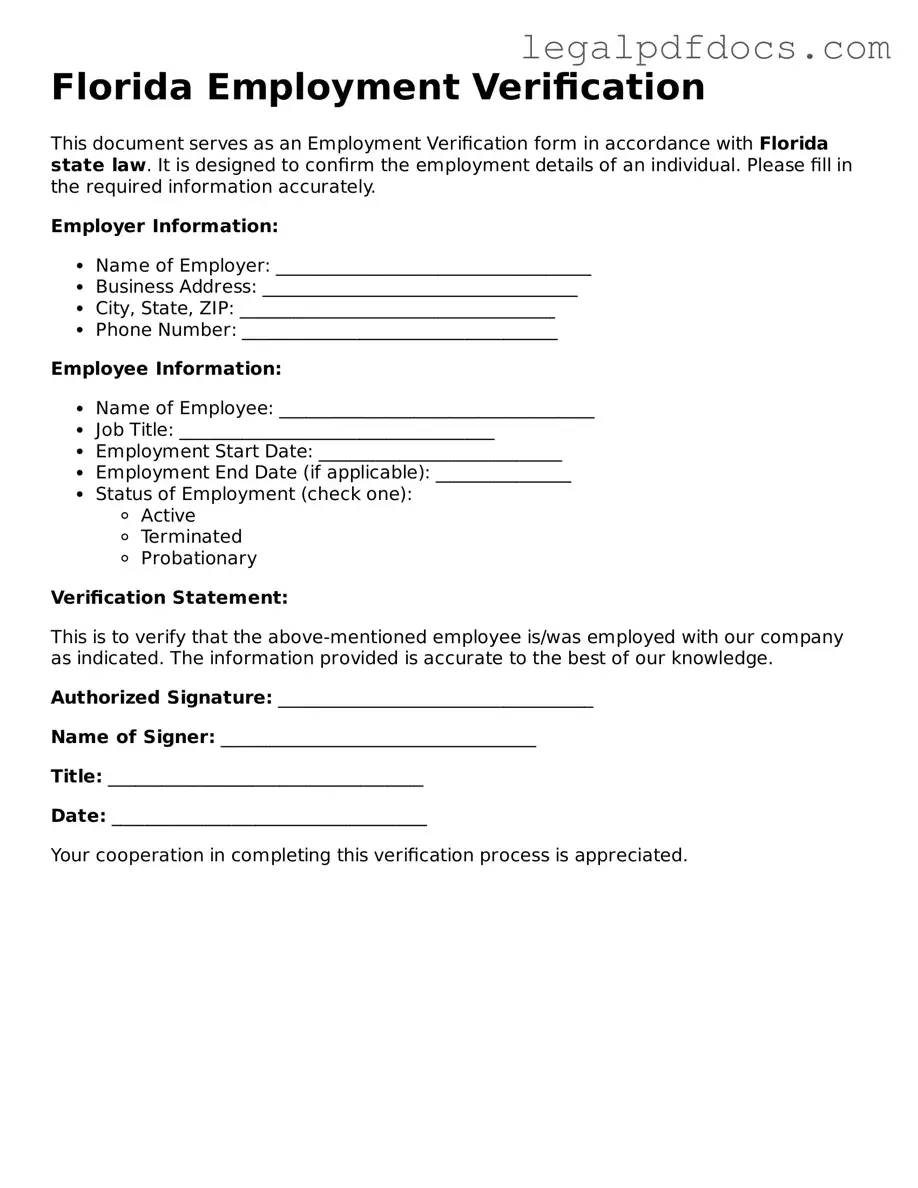In Florida, the Employment Verification form plays a crucial role in the hiring process, serving as a vital tool for employers and employees alike. This form is primarily used to confirm an individual's employment status, including their job title, duration of employment, and salary information. Typically, it is requested by prospective employers, lenders, or other entities that require proof of employment for various purposes, such as loan applications or rental agreements. While the specifics of the form may vary from one organization to another, it generally includes sections for both the employee and employer to fill out, ensuring that all necessary details are accurately captured. Understanding the importance of this form can help job seekers navigate employment opportunities more effectively and ensure that they present themselves as credible candidates. Additionally, employers can streamline their hiring processes by utilizing this form to verify the credentials of potential hires, thereby fostering a more efficient and trustworthy employment environment.
